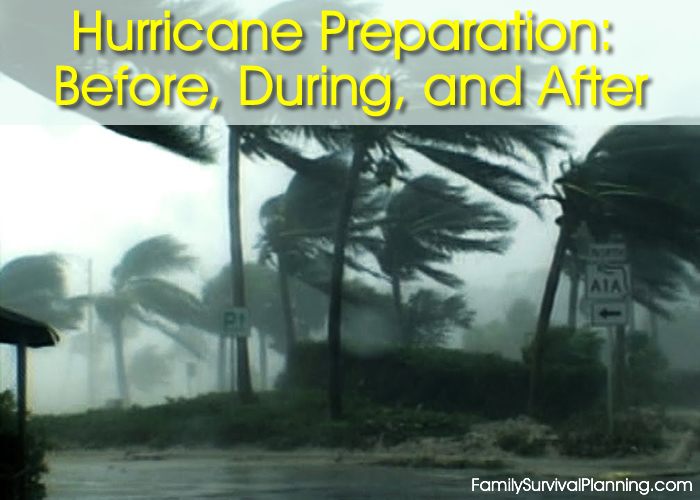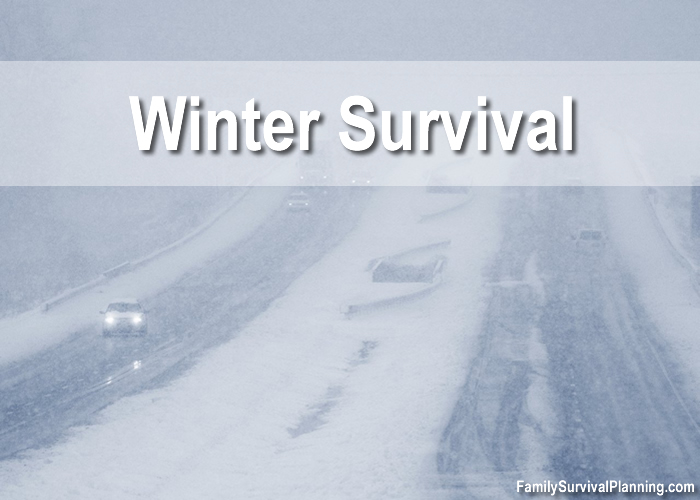- HOME
- Natural Disaster Survival
- Flood Preparedness
How To Prepare For Floods

Flood preparedness is essential no matter where you live, but especially if you live in a low-lying area, near water, at the bottom of a hill/mountain, downstream from a dam, or or you may live in a coastal area such as the Gulf of Mexico where hurricanes are common in the late summer months.
Many people blame the devastation of floods on the lack of wisdom of building in low-lying areas (think New Orleans), but this condition cannot always be prevented. There are many areas that are very flat, have rivers running through them, and Mother Nature dumps too much rain and snow on already saturated earth. That was the condition of the flood in Tremonton, Utah (photo).
Invest in emergency food storage now and enjoy peace of mind for the next 25 years. Don't miss out on the savings!
As one resident described the conditions:
"Some of the localized flooding might be attributed to homes in low lying areas, but we are seeing the Bear River completely over its banks; the Malad [River] is no longer a trickle but a lake. Fields which have been farmed for over 100 years are now ponds with water running out of the drainage ditches and canals into the roads. Older homes are flooded; newer homes are flooded; corrals are flooded; pasture land is flooded. Water is coming up through cement floors and sewer drains. Septic fields and tanks are overloaded and overflowing into homes. This is not simply a 'poor planning' issue. Three weeks ago we were covered with over 3 feet of snow. That has mostly melted, and coupled with rain that water has nowhere else to go. Thank you to all those who have filled sandbags, sandbagged homes and businesses, pumped water, moved furniture, provided food and drinks, mucked out mud, loaned fans, and prayed."
Source: Comments: DeseretNews.com
As you can see, there is no stopping the weather from creating disasters for us. The only thing we can do is prepare as best we can.
These suggestions will help you create your own flood preparedness plan.
What to Do Before a Flood
Flood Watch - Flooding is possible. Watches are issued 12-36 hours in advance of a possible flooding event.
Flash Flood Watch - Flash flooding is possible. Be prepared to move to higher ground. A flash flood could occur without any warning.
Flood Warning - Flooding is occurring or will occur soon. If advised to evacuate, do so immediately.
Flash Flood Warning - A flash flood is occurring. Seek higher ground on foot immediately.
- Know the terms used to describe flooding.
- Do some research in your area. Ask local officials whether your property is in a flood-prone or high-risk area. Ask about official flood warning signals and what to do when you hear them. Also ask how you can protect your home from flooding.
- Purchase a solar powered radio that includes AM/FM, NOAA Weather (NWR), shortwave, and is powered by several sources, i.e. AA battery, AC/DC adaptor, crank, and solar.
- Be prepared to evacuate. Explore your area and learn your community's flood evacuation routes and where to find high ground. (Create your evacuation plan here.)
- Talk to your family about the possibilities of flooding. Plan a place to meet in case you are separated from each other and cannot return home.
- Prepare to survive on your own for at least three days. Assemble 72-hour kits for each member of your family. Have some food storage and a water supply for emergencies such as this.
- Know how to shut off electricity, gas, and water at the main switches and valves. Know where gas pilot lights are located and how your heating system works.
- Consider purchasing flood insurance.
- Record all of your personal property, either using a camera, videotapes, or just writing everything down. Store these in a safe place, preferably away from your home.
- Install check valves in sewer traps to prevent floodwater from backing up into the drains of your home.
- Construct barriers such as levees, berms, and flood walls to stop floodwater from entering the building.
- Seal walls in basements with waterproofing compounds to avoid seepage.
- Call your local building department or emergency management office for more information.
What to Do During a Flood
- Listen to the radio or television stations for local information.
- Flash floods can occur in drainage channels, canyons, streams and other areas known to flood suddenly.
- If local authorities issue a flood watch, prepare to evacuate.
- Secure your home if you have time. Tie down or bring outdoor equipment and lawn furniture inside. Move essential items to upper floors.
- Turn off utilities at the main switches or valves. Disconnect electrical appliances. Do not touch electrical equipment if you are wet or standing in water.
- Sterilize the bathtub with a diluted bleach solution and then fill it full in case water becomes contaminated or services cut off.
- Do not walk through moving water. Six inches of moving water can knock you off your feet. If you must walk in a flooded area, walk where the water is not moving. Use a stick to check the firmness of the ground in front of you.
- Be aware of the kind of flooding that is happening around you. If there is any possibility of a flash flood, move immediately to higher ground. Do not wait for instructions to move.
What to Do After a Flood
Health and Safety Precautions
- Wash hands frequently with soap and clean water if you come in contact with floodwaters.
- Throw away food that has come in contact with floodwaters.
- Listen for news reports to learn whether the community's water supply is safe to drink.
- Listen to news reports for information about where to get assistance for housing, clothing, and food.
- Seek necessary medical care at the nearest medical facility.
- Avoid floodwaters. The water may be contaminated by oil, gasoline, or raw sewage. The water may also be electrically charged from underground or downed power lines.
- Avoid moving water. Moving water only six inches deep can sweep you off your feet.
- Be aware of areas where flood waters have receded. Roads may have weakened and could collapse under the weight of a car.
- Stay away from downed power lines and report them to the power company.
- Stay away from designated disaster areas unless authorities ask for volunteers.
- Return home only when authorities indicate it is safe. Stay out of buildings if surrounded by floodwaters. Use extreme caution when entering buildings. There may be hidden damage, particularly in foundations.
- Service damaged septic tanks, cesspools, pits, and leaching systems as soon as possible. Damaged sewage systems are serious health hazards.
- Contact your insurance agent. If your policy covers your situation, an adjuster will be assigned to visit your home. To prepare: Take photos of all your belongings and keep detailed records of clean-up costs.
Supplies You May Need:
- Survival Kits & Backpacks
- Emergency Water - Pouches or Cans
- Portable Katadyn Water Filtration - Perfect for Purifying Flood Water!
- Solar-Powered Radio
- First-Aid Kits
- Auto Emergency Kit














